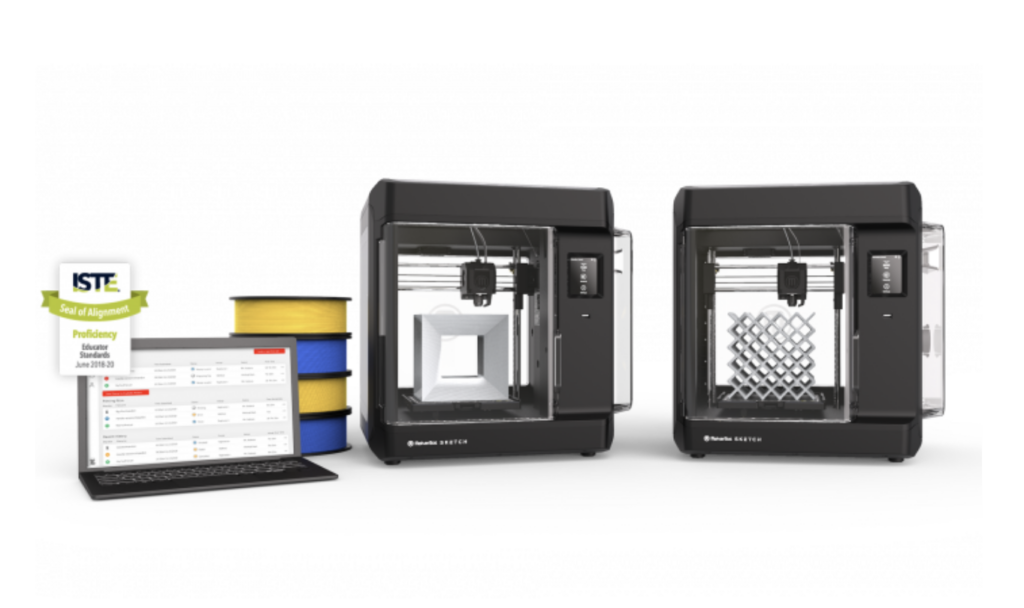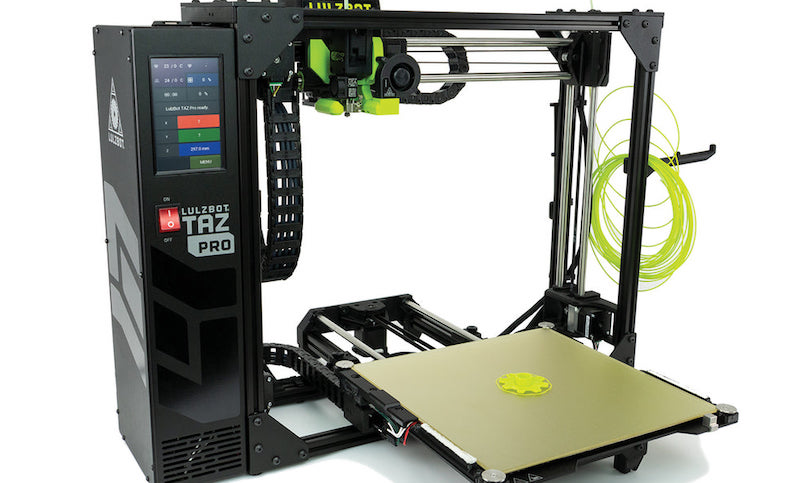There's a wide range when it comes to various benefits of 3D printing in education, like teaching students about design thinking, empowering them to think like innovators, and, of course, exposing them to relevant technology. Like with any new educational endeavor, however, successfully integrating 3D printing in the classroom takes added planning, patience, and persistance. Also, when the Maker Movement first started moving into education, there was some understandable skepticism around 3D printing. Just 10 or 15 years ago, for example, costs and complexity meant the best 3D printers became irrelevant more quickly.
Now, as we continue to preach the importance of STEAM education, MakerEd technology has, of course, evolved exponentially. In fact, having a station simply for 3D printing is fairly common in today's schools. A combination of more reliable technology, a better understanding of how kids view 3D printing experiences, educator-friendly support materials, and easily accessible project guides, the best 3D printers are also now among the most affordable and impactful in education. If you're a STEAM teacher or looking to enhance a school makerspace curriculum, these are five of our favorite options.
LulzBot Mini V2
One longstanding, reputable classroom 3D printer is the LulzBot Mini V2. This desktop 3D printer is one of the better 3D printers that students could use—due, in large part, to its versatility, solid performance levels, and scalability. As its name implies, the LulzBot Mini 3D printer is compact and portable, so students could print in different locations. It also boasts "whisper quiet" operation and the option for students to try multi-material printing. Plus, students can take advantage of a 20 percent larger build volume than they would get with the original LulzBot Mini and each Mini V2 arrives calibrated and ready to go. Finally, the LulzBot Mini software is easy to use and it comes with many helpful documents.

MakerBot SKETCH Classroom
The MakerBot SKETCH Classroom is another classroom-friendly option for adding 3D printing to STEM classes. For what teachers get, it comes in a truly affordable two-printer bundle with all of the 3D printing materials, including six spools of filaments, four build plates, two spatulas, and even two snips as well. It also includes access to the web-based MakerBot CloudPrint platform. Using CloudPrint, students can create 3D designs from anywhere and send them to their preferred printer. With this multi-printer solution, it's easier and more cost-effective to make 3D printing experiences a regular part of hands-on learning.
MakerBot METHOD 3D Printers
Comprised of four unique 3D printers, the MakerBot METHOD series provide incredibly high performance, precision, and beauty in the details. Both the MakerBot METHOD and METHOD X 3D printers are fantastic for high school makerspaces. There's also the MakerBot Carbon Fiber option for each of those printers. With the Carbon Fiber printer, students can print carbon fiber-reinforced nylon and engineering-grade parts in their classroom, libraries, or makerspaces. These next-generation desktop printers provide best-in-class features and help optimize digital designs and fabrication. They also feature CAD integration, build speeds of up to two times faster than other printers, compatibility with a range of file types, and more.

LulzBot TAZ Pro
In addition to the LulzBot Mini, the LulzBot TAZ Pro 3D printer is another powerhouse in maker education lessons. It's technically an industrial desktop 3D printer and enables students to create larger designs than some of the other best 3D printers. It also supports multi-material 3D printing and the option to print softer and more flexible materials as well. The TAZ Pro also includes a tool kit (like your Mini V2) with replacement wiper pads, a part removal tool, scrub pads, tweezers, and more. It's even compatible with Linux, macOS, and Windows 10 computers, so the 3D printer software is easily accessible.
FlashForge Adventurer 4 3D Printer
Following in the footsteps of the FlashForge Adventurer 3 and Adventurer 3 V2, the Adventurer 4 provides similar value in education. It's not as popular in the education worlds as the MakerBot, LulzBot, or even the 3Doodler models but it's incredibly capable if you have students with more advanced skills. Plus, its quick release nozzle, auto levelling, and removable build platform also each help enhance its value. Students can even manage one or more Adventurer 4 3D printers remotely for even more access. The Adventurer 4 also pairs with FlashForge's FlashPrint software and works with PLA, ABS, PETG, PLA-CF, PETG-CF, and ASA filaments. Plus, it comes with a bunch of accessories and an air filtration system to ensure safety.
If you've seen students benefit from in-class 3D printing experiences—whether they mostly access it in a school makerspace, as part of their CTE classes, or even in afterschool STEAM programs, feel free to share your thoughts in the comments. Also, if you're interested in adding 3D printers to your makerspace or introducing students to 3D printing and CAD software, feel free to let us know. We can help you find the right tools and offer the best prices possible. Check out the rest of our classroom 3D printers on our store, too. And, as always, follow us on Twitter and Instagram for more.








Looking to upgrade our CTE lab with new 3D printers to enhance our curriculum. I currently use Afinia 800+ printers and AutoDesk 360. I understand you have a complete software for AutoDesk 360 from learnbylayers.com. What 3D printers could I use to upgrade?
Thank you,
Bill Geppert
Cape Henlopen High School
1250 Kings Highway
Lewes, DE 19958